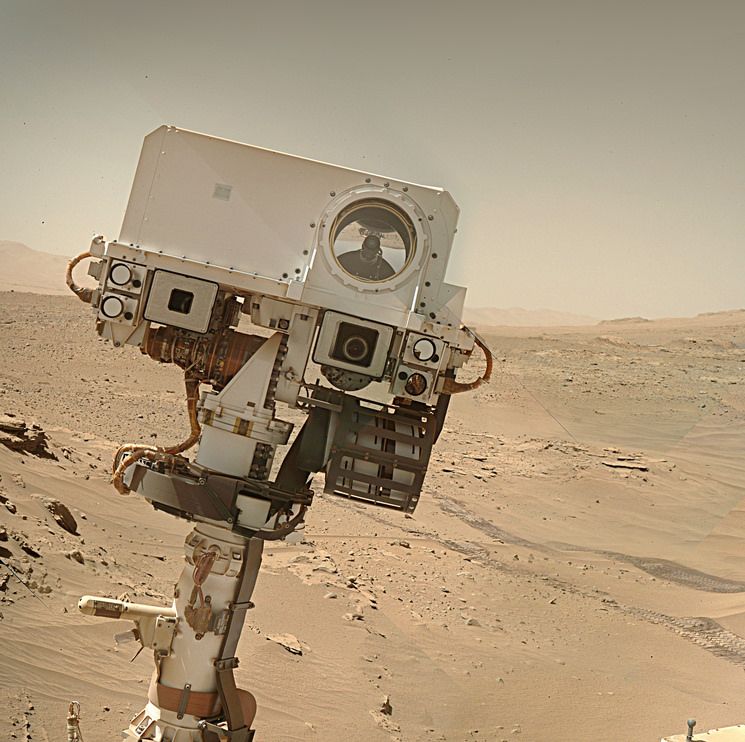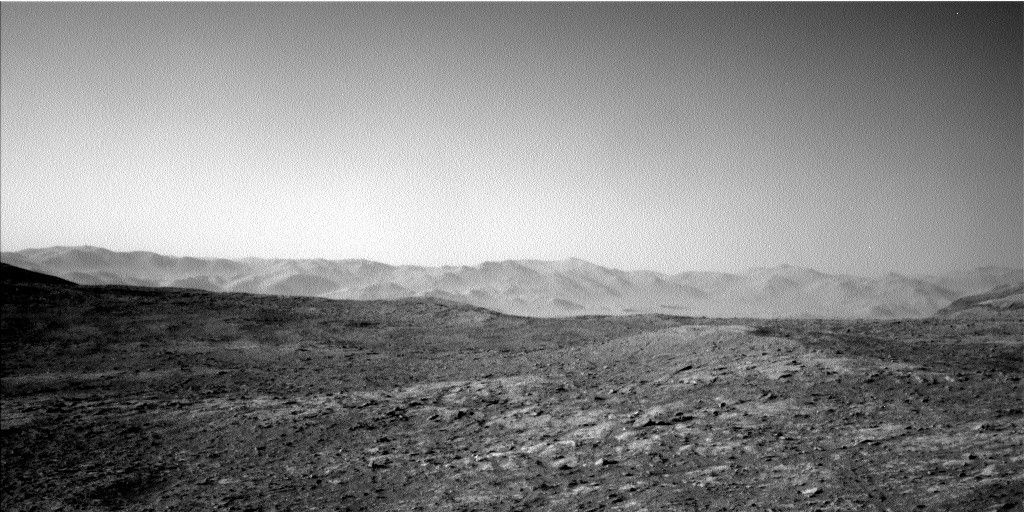- 1.03K Posts
- 464 Comments

 3·1 day ago
3·1 day agoDid this short drive really take 1 hour?
The data shows that duration.
We can usually trust this data, although the JSON data is occasionally revised and the JSON updated, after the team have checked the data, but that’s rare from what I’ve observed.
The data is provided by JPL, in their post drive Traverse JSON URL.
That JSON reports the mission clock time in seconds (since landing).
It reports the start-of-drive (SCLK_Start) and end-of-drive (SCLK_End).
The difference between the two timestamps for this drive is 3504 seconds, or 58.4 minutes
I’m assuming the rover paused at some point during its drive although there are no mid drive images (so far), the clock keeps running during pauses for imaging or hazard avoidance.
I don’t see any hazards, except for the small boulder to the side of the rover at the start of the drive. I’ve checked the RMC numbers on all the images we have so far from sol 1551, and I don’t see any mid-drive images.
There may be some further images that are still on the rover (yet to be downlinked), so let’s assume that it paused to drive around that rock (see attached pre-drive HazCam tile)


 2·1 day ago
2·1 day agoI hope I’m better at geology than poetry.
Your geology and poetry are way better than mine :)

 2·3 days ago
2·3 days agoGood one 🤣🤣🤣

 2·3 days ago
2·3 days agoI’d hazard a guess that is why they returned to this area. Yes the rock is readily fractured, but possibly better cemented than those further west and south. We’ll see if they try a new abrasion or just go for a core :)

 2·3 days ago
2·3 days agoJust in case you’d missed it: You can turn parts of the map on and off on the Berlin map, eg those camera icons and the rover’s current location + See this screen shot


 2·3 days ago
2·3 days agoIt’s a good map, very useful :)

 2·3 days ago
2·3 days agohttps://lemmy.world/u/SpecialSetOfSieves
May be of some interest :)
Kathir et al: “Multispectral Observations of Float Rocks Used to Investigate the Origin of Boulders on the Western Jezero Fan Front”
https://doi.org/10.1029/2024JE008702
(posted by one of the guys I follow over on Mastodon) :)

 2·4 days ago
2·4 days agovideo link - https://youtu.be/eGzZj2Nzr6U

 2·5 days ago
2·5 days agoNot looking good. Sol 1548 NavCam tile (processed (NASA/JPL-Caltech)
Third time’s a charm? Or time to move on? I’d say go for it again


 3·6 days ago
3·6 days agoNice animation :) Definitely an improvement on the earlier attempt, we see still see some some fracturing, but a lot less movement (side-to-side) movement of the drill (maybe more down-force on the support pillars?). We’ll have to wait for the post abrading images after they move the turret away from the site so see what they have achieved. Whatever the results of this abrasion the fact that it readily breaks up, attempts to retain a core will likely be difficult.

 2·6 days ago
2·6 days agoFingers crossed :)

 2·8 days ago
2·8 days agoNice
cheatobservation :)

 2·8 days ago
2·8 days agoI’m assuming that this was where the patch was meant to be.
Any bets regarding another try close by?

 2·9 days ago
2·9 days agoI’m sure they have a ton of drill data, hopefully they’ll share something soon :)
As for your missing patch names looks like you have to wait until Early August for the next update


 3·9 days ago
3·9 days agoLooks to my old eyes like the surface layer broke up and was scattered around. As you say there appears to be some movement of the turret / robotic arm, so I believe you’re spot on in predicting that the abrading process was likely ended early. We’ll have to await for those post abrasion images. Let’s hope it’s not like the previous patch where we had to wait days for the drill to be moved.
BTW, Do you have a list of patches that you don’t yet have a name for (before sol 1380)?

 2·9 days ago
2·9 days agoThat’s extremely useful. Pity they don’t release the names of all the patches in the updates. I know we’ll eventually see the names in the mission managers reports, but those are many months away.

 1·11 days ago
1·11 days agoSomeone’s making a penny
Looking at the current stats for this post, someone has made 24 cents :)

 2·11 days ago
2·11 days agothat’s cool! I guessed either for camera scale purposes or luck and got pretty close!
You were spot on.
For those that don’t want to follow the link…
The Lincoln penny in this photograph is part of a camera calibration target
The calibration target for the Mars Hand Lens Imager (MAHLI) instrument also includes color references, a metric bar graphic, and a stair-step pattern for depth calibration. The MAHLI adjustable-focus, color camera at the end of Curiosity’s robotic arm can be used for taking extreme close-ups of rocks and soil on Mars, rover selfies, as well as images from greater distances.
The penny is also a nod to geologists’ tradition of placing a coin or other object of known scale as a size reference in close-up photographs of rocks, and it gives the public a familiar object for perceiving size easily when it will be viewed by MAHLI on Mars.
The specific coin, provided by MAHLI’s principal investigator, Ken Edgett, is a 1909 “VDB” penny. That was the first year Lincoln pennies were minted and the centennial of Abraham Lincoln’s birth.
Why a 1909 penny? Curiosity was going to launch in 2009, the centennial of the Lincoln Cent and bicentennial of Lincoln’s birth. When the launch was delayed, Ken made the decision to stick with the historic 1909 cent rather than try to find a 1911 cent as the coin was bonded into the calibration target and had already been delivered to NASA.
And it was lucky, despite many issues along the way, Curiosity has been exploring Gale crater since August 2012. In that time it’s amassed enough science data to keep scientists busy for years.

As you say ‘It is hard to tell’, but going by the reflected light inside the tube in one of the CacheCam frame we have at this time, I’m assuming that that core fell out before it reached the imaging station inside the rover. More images needed :)Update Edit after more images arrived:
Looks like I was wrong, there appears to be a small fragment in the bottom of the tube